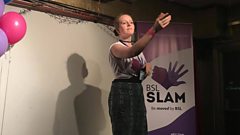Sign Language
Not everyone who is deaf uses sign language and not everyone who uses sign language is deaf. Lee Kumutat explores the impact of Sign Language on deaf culture and deaf identity
Every country in the world has at least one Sign Language. Each is a complete communication system with its own grammar, lexicon and structure and has evolved over centuries, just like their verbal counterparts.
Although many have legal status under disability legislation, only four have been given the status of a recognised official language.
But not everyone who is deaf uses sign language, and not everyone who uses sign language is deaf.
There is a debate in deaf communities as to whether they have ‘hearing loss’ or ‘deaf gain’
Why do some people view deafness as a disability, while others celebrate it as a cultural inheritance?
Some deaf rights campaigners say that Sign language is a signifier of belonging to a Deaf community, with a rich cultural legacy.
But does the choice to use hearing aids and cochlear implants to help use verbal language really mean a rejection a deaf culture and a deaf identity – or a practical way to integrate with a predominantly hearing world?
(Image: Smiling mother signing with child, Credit: Andrey Popov/Shutterstock)
Presenter: Lee Kumutat
Last on
More episodes
Clips
-
![]()
“Without Sign language I would probably be dead”
Duration: 00:31
-
![]()
British Sign Language…is not the language of the curriculum
Duration: 01:42
-
![]()
Hearing loss or Deaf gain?
Duration: 01:31
Transcript
Broadcasts
- Mon 31 Jul 2017 12:32GMT���˿��� World Service except News Internet
- Mon 31 Jul 2017 21:06GMT���˿��� World Service except News Internet
- Tue 1 Aug 2017 01:32GMT���˿��� World Service except News Internet
- Mon 7 Aug 2017 05:32GMT���˿��� World Service South Asia
Get the podcast
Subscribe or download individual episodes for free
Why do we look the way we do?
Tattoos, trainers, jeans, hair, ties ... why?
Podcast
-
![]()
The Why Factor
The extraordinary and hidden histories behind everyday objects and actions





